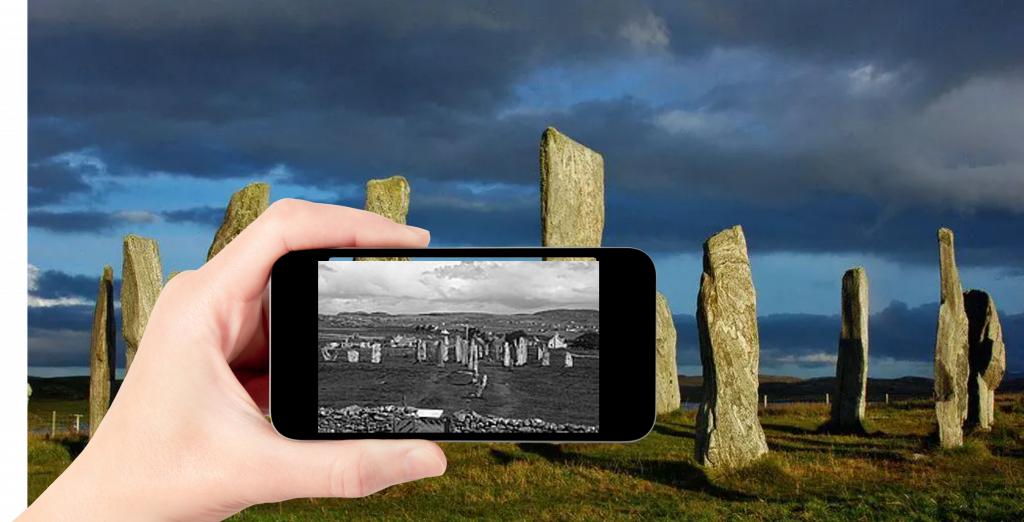December 17, 2023, by Laura Nicholson
Augmented Reality: Beyond QR codes
On this merry day in our advent calendar, Sally Hanford, our Learning Technology Consultant for Arts, brings tidings of joy and reflects on the opportunities that await with Augmented Reality (AR)! 🎁🌟
What is Augmented Reality?
Augmented Reality (AR) has made it possible to interact with the digital world in new ways, using the physical world as a canvas for digital innovation.
A comparison of Virtual, Augmented and Mixed Reality

In virtual reality, an individual experiences complete immersion within a synthetic or virtual environment. Augmented reality, on the other hand, involves overlaying virtual objects onto a person’s surroundings, seamlessly integrating digital elements into the real world. Mixed reality merges the virtual environment with the real world, allowing individuals to interact simultaneously with both.
Augmented Reality Image Triggers
You’re probably already familiar with QR codes, which when scanned can trigger actions such as loading a website or a video. They work well, but no human can read a QR code and they are not instantly recognisable like other images, so it’s appealing to link the action to a recognisable image using the image as the trigger for the action.
AR Image Triggers use the concept of marker-based tracking. These markers are usually visual patterns, symbols or photographs that act as anchor points for AR applications. When someone uses their device to detect these triggers, an overlay of digital content is loaded, creating an augmented experience.
Image triggers work by leveraging computer vision algorithms. As the device’s camera scans the surroundings, it analyses the captured images in real-time. Once it identifies a predefined trigger pattern, the AR system aligns the virtual content with the trigger, creating a seamless integration of the digital and physical worlds.
Other Applications of AR
If you like wine, check out the 19 Crimes wine selection that has criminals from history telling their stories when the image of the perpetrator is scanned.
In education, textbooks can transform into interactive learning tools. Students can explore 3D models, animations, and additional multimedia content simply by pointing their devices at specific images in their textbooks.
The Challenges of AR
There are some challenges though. Lighting conditions, the need for clear visuals, and ensuring a seamless user experience are key considerations to create a satisfying experience. Continuous advancements in computer vision technology are addressing these challenges, making AR experiences increasingly accessible to create.
This technology isn’t new. I experimented with an app called Aurasma (no longer available) many years ago and was quite surprised at how impressed people were with a person appearing to ‘come to life’ on the page.
I recently tried this again using the first frame of a video as a trigger (using one of the many AR applications available to link it to content), then printed this out. When scanned with a special app, the image appears to ‘come to life’ on the paper. We plan to use this technique for an ‘augmented poster’ submission to a conference in December.
Your Experiences
Have you tried creating an AR experience? If so, please do get in touch and let us know what you did and how it went.
Do you think that in the future augmented reality will be seamlessly integrated into our daily lives?
Do you think this might work for you as an educational tool?
If you would like to share your ideas, please do get in touch with sally.hanford@nottingham.ac.uk
No comments yet, fill out a comment to be the first


Leave a Reply